Introduction
As the construction industry continues to evolve, the need for efficient, flexible, and cost-effective solutions becomes increasingly apparent. In 2025, one of the standout trends revolutionizing construction sites is the use of on-site storage containers. These containers are transforming the way construction projects are managed, offering a versatile and scalable option for storing materials, tools, and equipment directly at the worksite. This change is not just about convenience; it’s a fundamental shift that impacts logistics, project timelines, and overall site management.
On-site storage containers are not a new concept, but their application and integration into construction projects have become more sophisticated and widespread. This blog post will delve into how these containers are changing the landscape of construction sites, the benefits they provide, and the innovative ways they are being used. From enhancing security to improving workflow efficiency, on-site storage containers are a game-changer for the construction industry.
The Rise of On-Site Storage Containers
The growth in the use of on-site storage containers can be attributed to several factors, including the increasing complexity of construction projects and the demand for faster completion times. As projects grow in size and scope, the need for organized and secure storage solutions becomes paramount. On-site storage containers offer a practical answer to this need, providing a dedicated space for materials and tools, which helps keep the construction site organized and efficient.
Moreover, the modern construction site is a bustling hub of activity, with various teams working concurrently. Coordinating these activities requires meticulous planning and management, and on-site storage containers facilitate this process by ensuring that all necessary materials and tools are readily available. This reduces downtime and minimizes disruptions, ultimately contributing to a smoother workflow and faster project completion.
Flexibility and Scalability
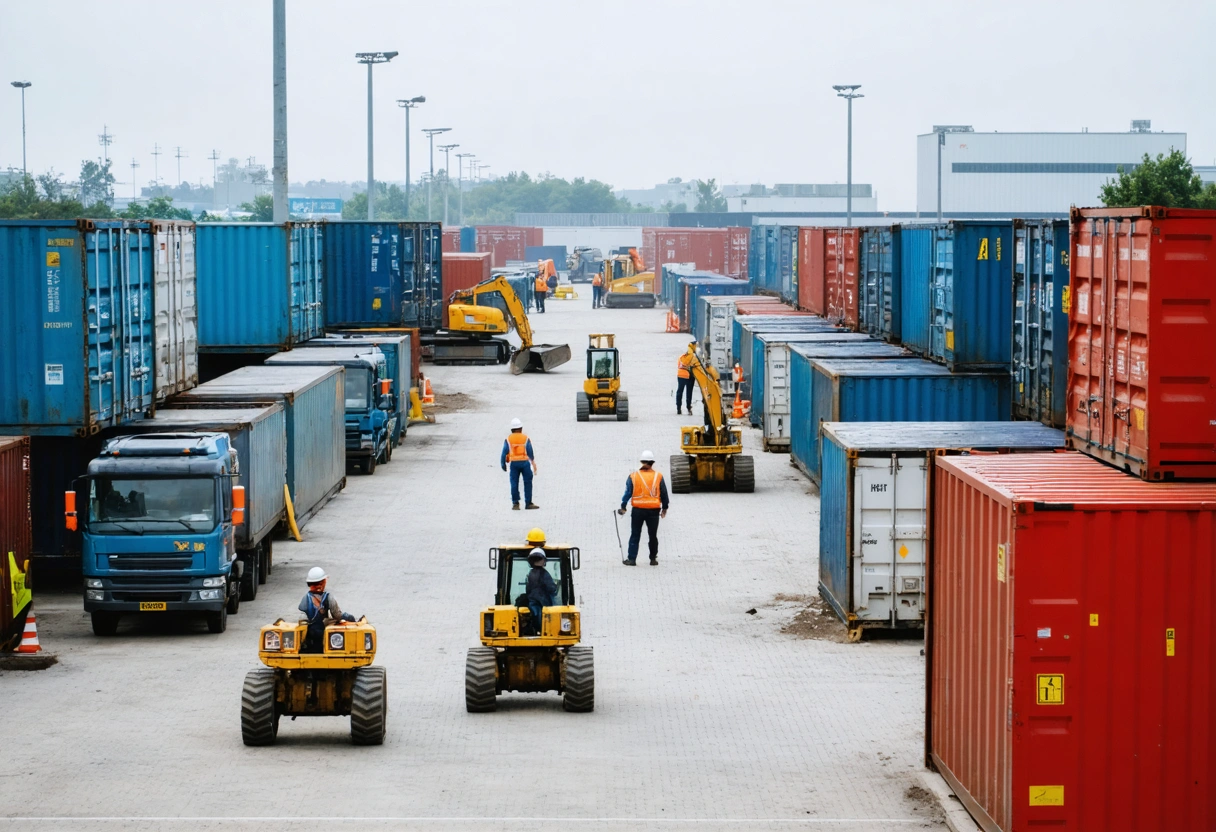
One of the most significant advantages of on-site storage containers is their flexibility and scalability. These containers can be easily transported and repositioned within the site, allowing for adaptable storage solutions that can be tailored to the specific needs of a project. Whether it’s a small-scale renovation or a large infrastructure project, on-site storage containers can be customized to fit the requirements of the job.
Additionally, as projects progress and evolve, the storage needs may change. On-site storage containers offer the ability to scale up or down as needed, providing a dynamic solution that grows with the project. This flexibility is invaluable in an industry where timelines and requirements can be unpredictable.
Enhancing Security on Construction Sites
Security is a major concern on construction sites, where valuable tools and materials are often left unattended. On-site storage containers provide a secure solution, acting as lockable vaults that protect equipment and materials from theft and vandalism. With robust steel construction and secure locking mechanisms, these containers significantly reduce the risk of loss, which can have a substantial financial impact on a project.
Moreover, the presence of on-site storage containers can deter potential thieves, as the additional security measures make it more challenging to access the materials. This peace of mind allows project managers to focus on other aspects of the construction process, knowing that their materials are secure. According to the Construction Dive, integrating storage solutions on-site has become a best practice for maintaining security and efficiency.
Improving Workflow Efficiency
Time is a crucial factor in construction, and any delays can lead to increased costs and extended project timelines. On-site storage containers play a vital role in improving workflow efficiency by ensuring that all necessary materials and tools are readily available. This minimizes the time workers spend searching for equipment or waiting for deliveries, allowing them to focus on their tasks and maintain productivity.
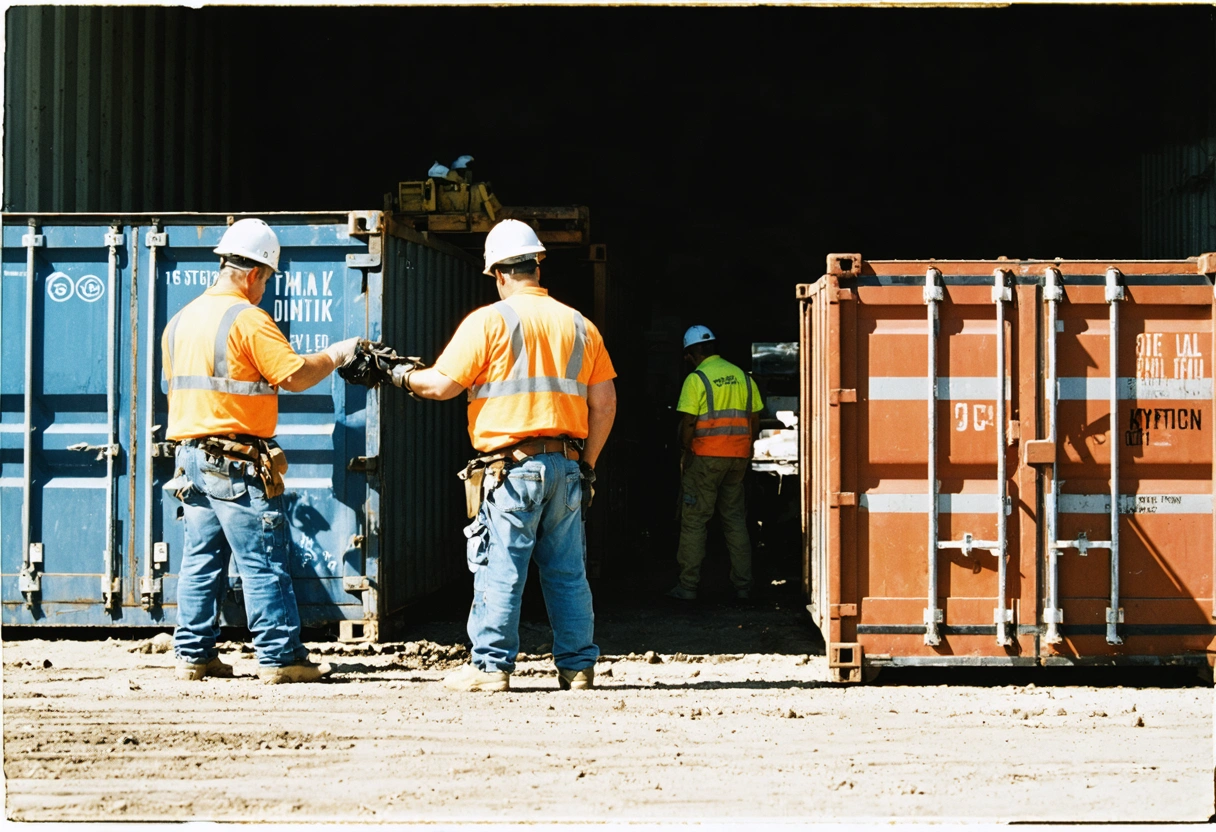
The strategic placement of storage containers around the construction site further enhances efficiency. By positioning containers near the areas where specific tasks are being performed, workers can quickly access the tools and materials they need. This reduces travel time across the site and streamlines the entire construction process.
Furthermore, the use of on-site storage containers allows for better inventory management. By organizing materials within the containers, project managers can keep track of what is available and what needs to be replenished, preventing costly delays due to shortages.
Environmental Impact and Sustainability
With growing awareness of environmental issues, the construction industry is increasingly focused on sustainability. On-site storage containers contribute to this effort by reducing the need for transportation and minimizing waste. By keeping materials and tools on-site, the frequency of deliveries is reduced, leading to lower emissions and a smaller carbon footprint.
Additionally, many storage containers are made from recycled materials, aligning with the industry’s push towards more sustainable practices. By choosing on-site storage solutions, construction companies can demonstrate their commitment to environmental responsibility, which can be a significant factor in winning new projects and building a positive reputation.
Innovative Uses of On-Site Storage Containers
Beyond their traditional role as storage units, on-site storage containers are being used in innovative ways that further enhance their value on construction sites. For example, some companies are converting containers into mobile offices or break rooms, providing a comfortable and functional space for workers to take breaks or hold meetings. This versatility makes storage containers a multipurpose asset that can be adapted to meet various needs on the construction site.
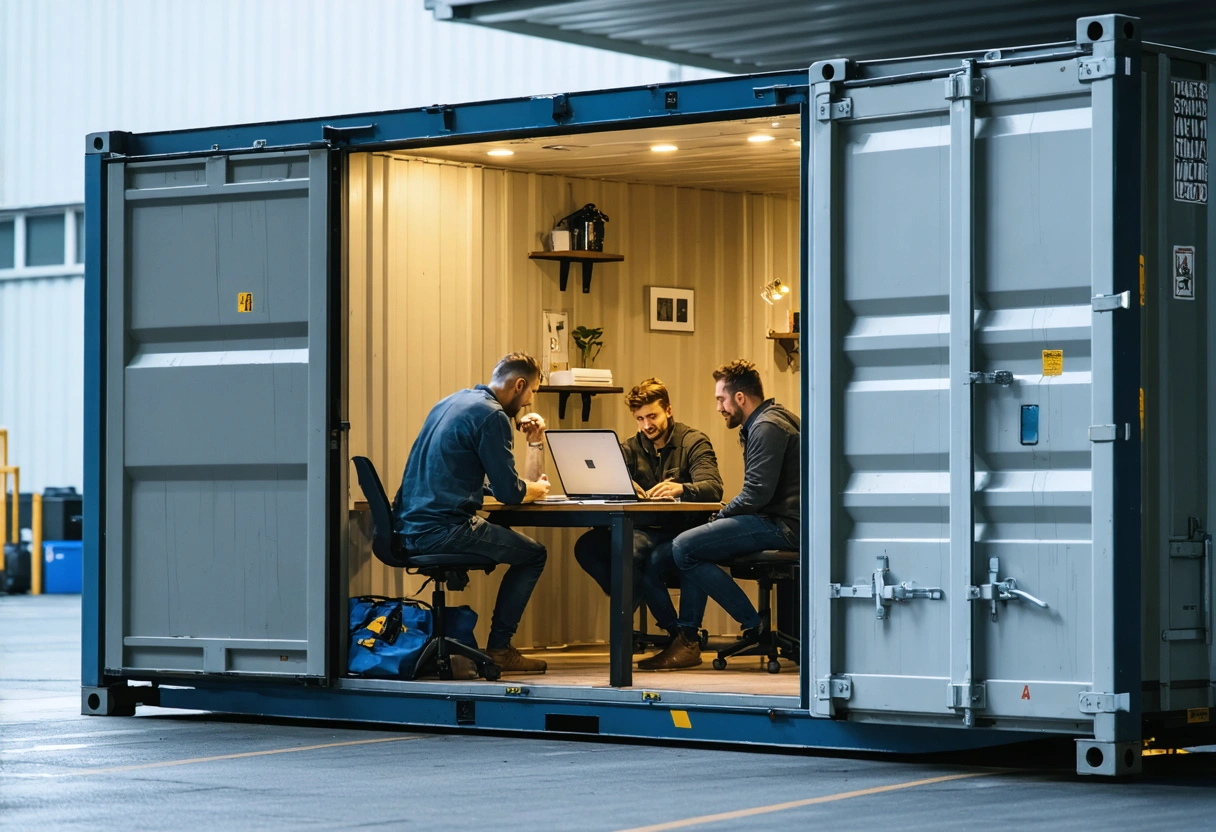
Another creative application is the use of containers as temporary workshops or fabrication areas. By equipping containers with workbenches and tools, construction teams can perform tasks directly on-site, reducing the need to transport materials to off-site facilities. This not only saves time but also enhances the precision and quality of the work performed.
According to the ArchDaily, the adaptability of storage containers has led to their use in a variety of architectural applications, demonstrating their potential beyond simple storage solutions.
Case Studies: Successful Implementations
Numerous construction projects have successfully integrated on-site storage containers, showcasing their benefits and versatility. For instance, a large-scale infrastructure project in New York utilized storage containers to organize and secure materials over an extended period. This not only improved site security but also streamlined the workflow, allowing the project to be completed ahead of schedule.
In another example, a residential development in California employed storage containers as a part of their sustainability initiative. By using recycled containers and reducing transportation needs, the project minimized its environmental impact while maintaining efficiency. The use of on-site storage containers was a key factor in achieving the project’s sustainability goals, highlighting their role in promoting environmentally friendly construction practices.
These case studies demonstrate the tangible benefits that on-site storage containers can provide, from improving security and efficiency to supporting sustainability efforts. As more companies recognize these advantages, the adoption of storage containers is expected to continue growing in the coming years.
Takeaways
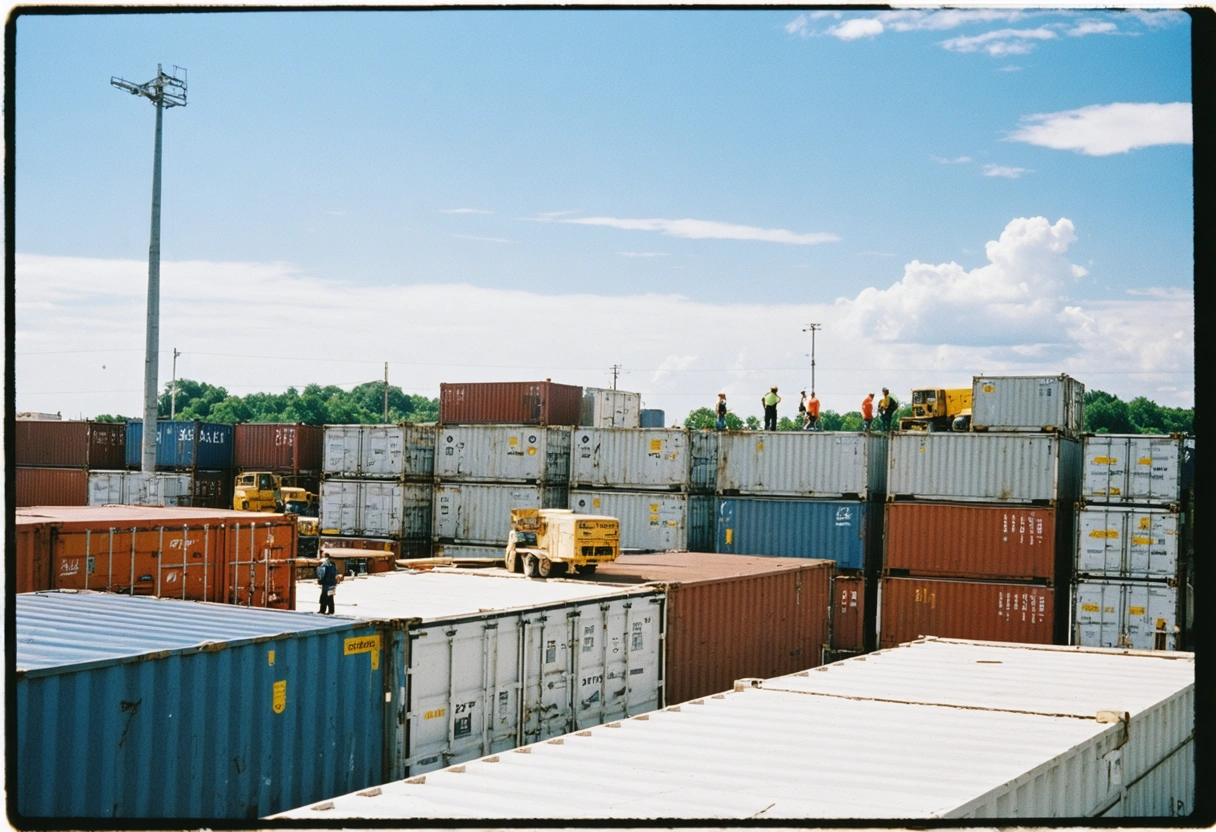
The trend of using on-site storage containers in construction is set to continue its rise in 2025 and beyond. These containers offer a flexible, secure, and environmentally friendly solution that addresses many of the challenges faced by modern construction projects. By enhancing security, improving efficiency, and supporting sustainability, on-site storage containers are revolutionizing the way construction sites are managed.
As the industry continues to evolve, the importance of innovative and adaptable solutions like on-site storage containers cannot be overstated. By leveraging these tools, construction companies can not only improve their operations but also position themselves as leaders in a competitive and rapidly changing market. For further insights into how storage containers are transforming construction, check out this comprehensive guide from The Balance SMB.
Ultimately, the integration of on-site storage containers represents a significant step forward for the construction industry, offering a practical and innovative solution that meets the demands of modern projects. As more companies embrace this trend, the potential for improved efficiency, reduced costs, and enhanced sustainability becomes increasingly attainable.
Future of On-Site Storage Containers in Construction
Looking ahead, the potential of on-site storage containers extends beyond current applications. As technology continues to advance, these containers are expected to become even more integrated into the construction process. For instance, the rise of smart technology and the Internet of Things (IoT) is likely to play a significant role in the evolution of storage solutions. By equipping containers with sensors and connectivity features, construction managers can monitor conditions such as temperature, humidity, and security remotely.
These smart containers could alert project managers to any irregularities, such as unauthorized access or environmental conditions that could damage sensitive materials. This level of oversight would further enhance the security and efficiency of construction projects, providing real-time data that can be used to make informed decisions. The integration of such technologies into on-site storage containers is a natural progression, aligning with the broader trend of digital transformation in the construction industry.
Customization and Design Innovations
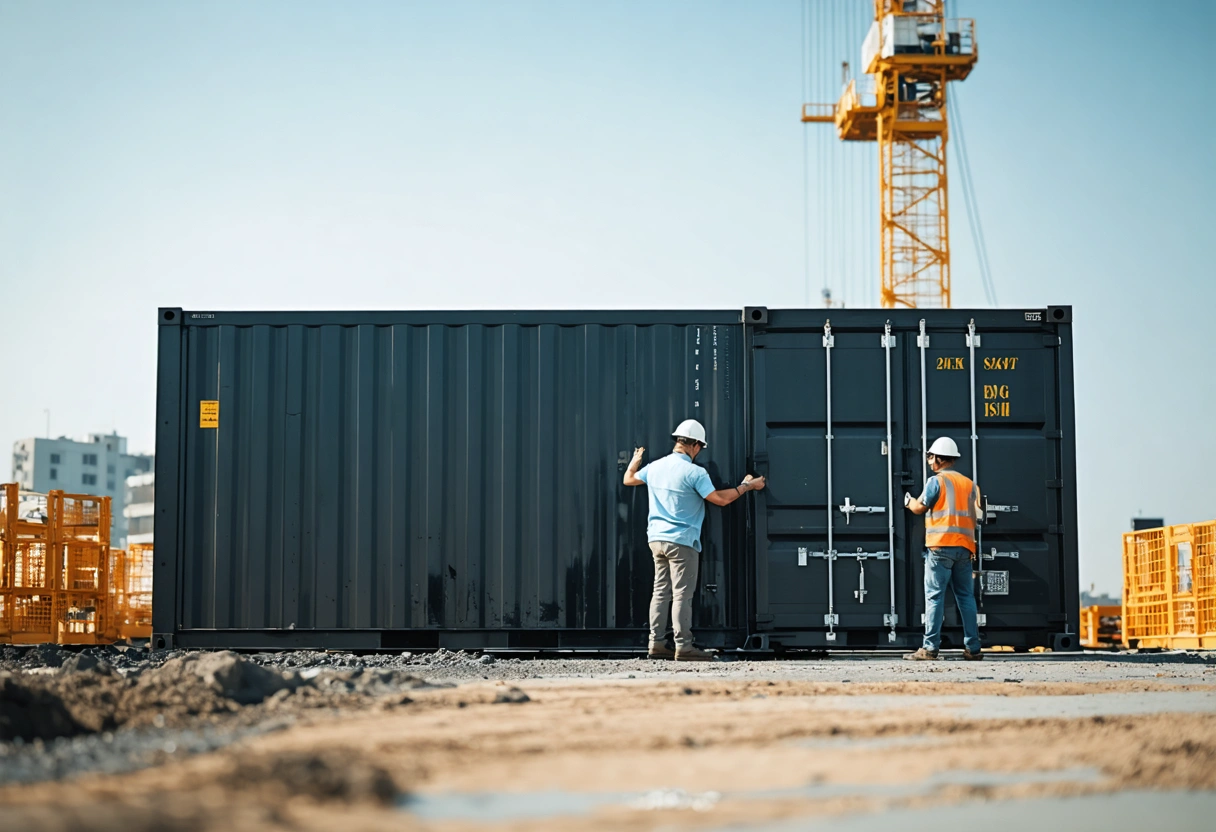
Another area where on-site storage containers are set to evolve is in customization and design. As the demand for more personalized and project-specific solutions grows, manufacturers are exploring ways to tailor containers to meet unique requirements. This could include modular designs that allow for easy expansion or reconfiguration, as well as specialized interior layouts that maximize space utilization.
There is also potential for aesthetic improvements, allowing containers to blend more seamlessly into the construction environment or even contribute to the site’s visual appeal. Innovations in materials and construction techniques could lead to containers that are not only functional but also sustainable and pleasing to the eye. For insights into the latest container design trends, Architectural Digest provides an excellent overview.
Challenges and Considerations
Despite the many benefits, there are challenges and considerations associated with using on-site storage containers. One of the primary concerns is the initial investment cost, which can be significant depending on the level of customization and technology integration. However, when weighed against the long-term savings from improved efficiency and reduced material loss, many companies find the investment worthwhile.
Additionally, the placement and installation of storage containers require careful planning to ensure they do not impede site operations or violate regulatory requirements. Construction managers must work closely with suppliers to understand the best practices for utilizing containers effectively. For more detailed guidance on overcoming these challenges, consult this Construction Executive resource.
In conclusion, the future of on-site storage containers in construction looks promising, with numerous opportunities for innovation and improvement. As the industry continues to embrace these solutions, the potential for enhanced project outcomes and efficiencies becomes increasingly attainable. By staying ahead of the trends and leveraging the latest technologies, construction companies can ensure they remain competitive in a rapidly changing landscape.
Need help with 2025’s Top Trends: How On-Site Storage Containers are Revolutionizing Construction Sites?


